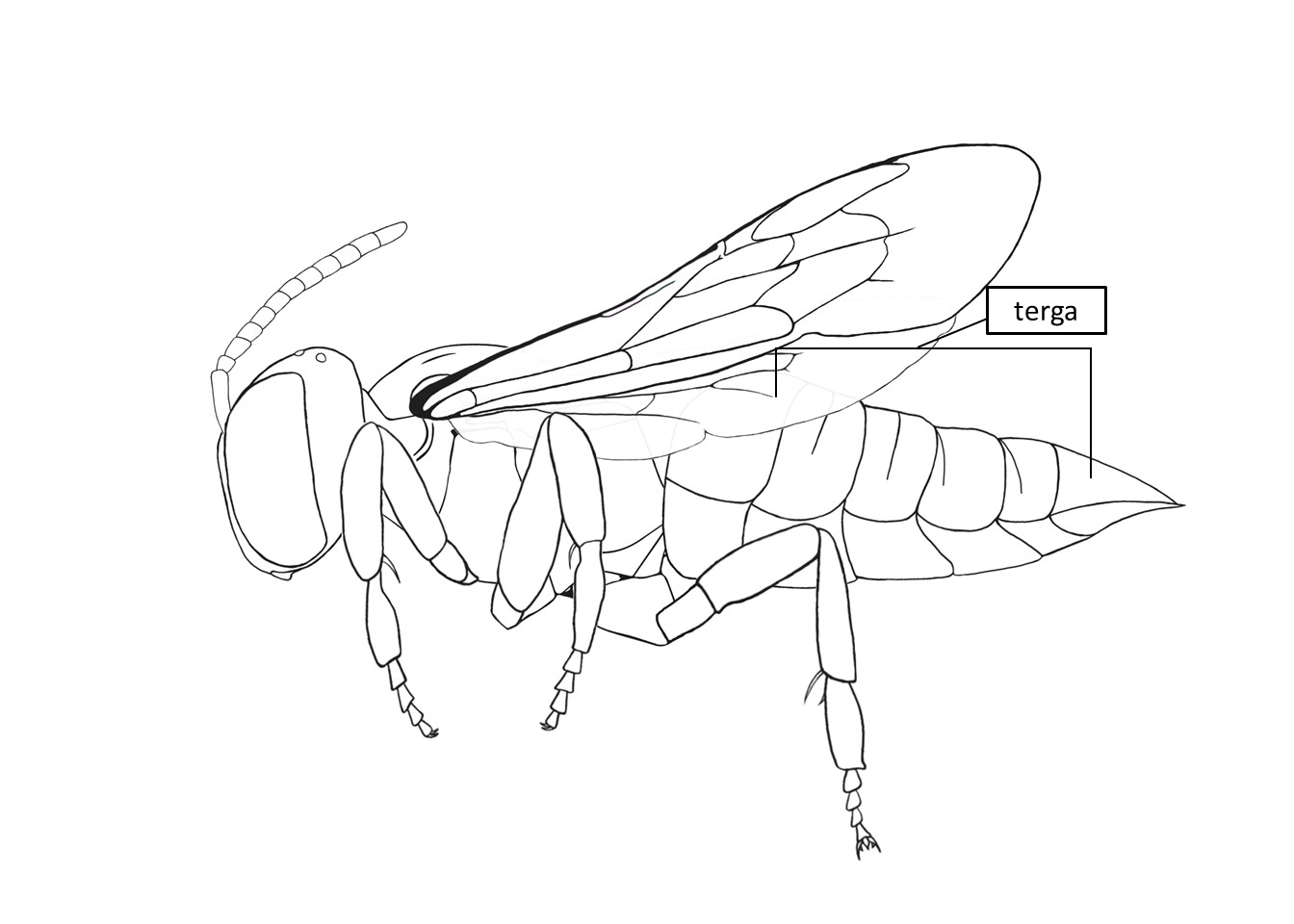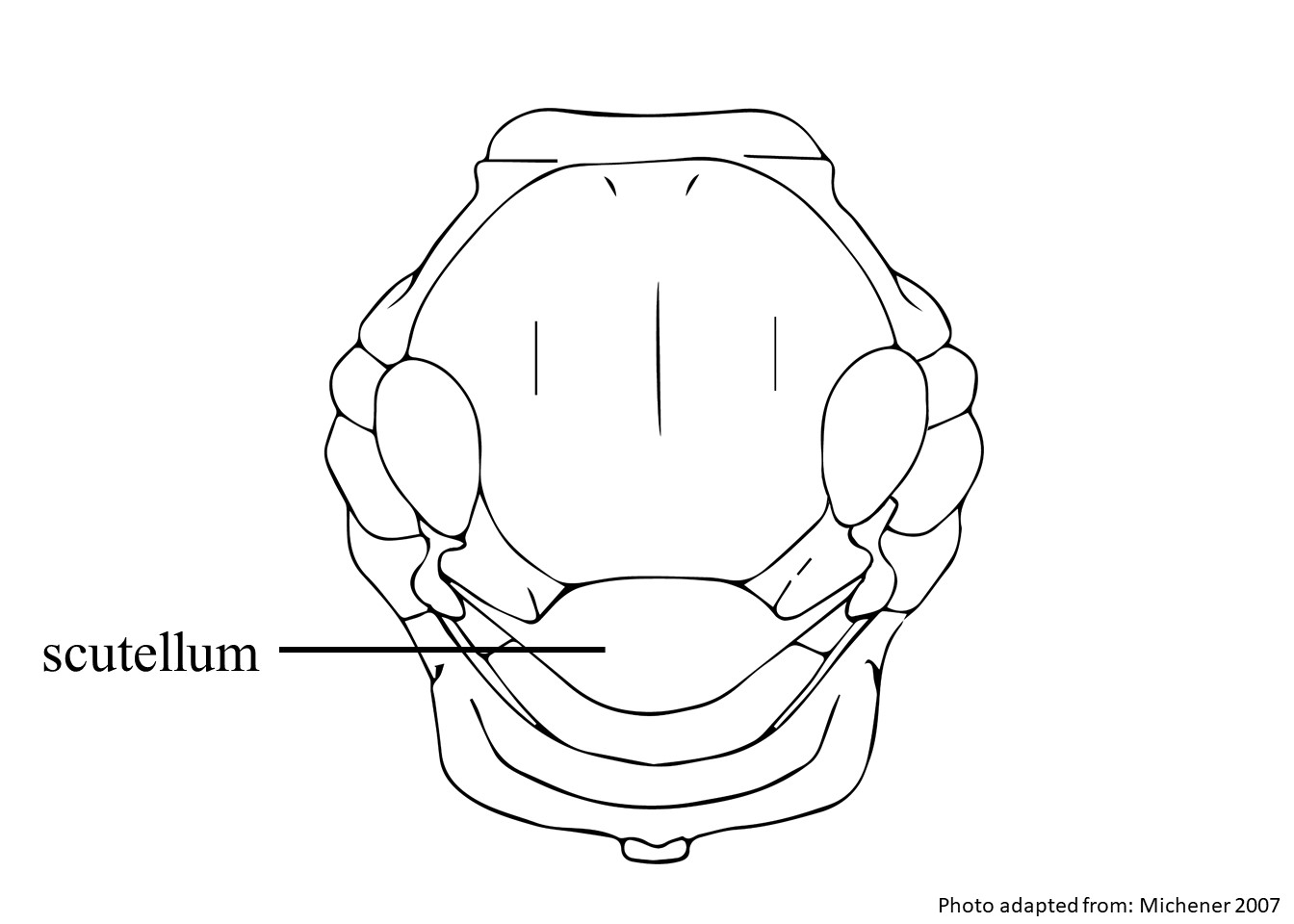Taxonomy
Family: Megachilidae
Subfamily: Megachilinae
Tribe: Anthidiini
Genus: Pseudoanthidium, Friese 1898
Subgenus: Pseudoanthidium, Friese 1898
Species: Pseudoanthidium soliferum (Cockerell, 1911)
Background
Pseudoanthidium soliferum are small bees, 6-6.5 mm in body length, with predominantly black
integumentintegument:
a tough, protective outer layer
and symmetrical yellow spots on their
tergaterga:
the segments on the top side of the abdomen, often abbreviated when referring to a specific segment to T1, T2, T3, T4, T5, T6, or T7

and
scutellumscutellum:
shield shaped plate behind scutum

. They have dense white
pubescencepubescence:
short, fine hair
that covers most of their bodies.
Distribution
Pseudoanthidium soliferum is known from Pakistan and India (
Mavromoustakis 1947bMavromoustakis 1947b:
Mavromoustakis 1947. XXXVIII.—New and little-known bees of the subfamily Anthidiinæ (Apoidea).—Part II).
Host associations
Floral associations are unknown.
Nesting behavior
Little is known about the nesting biology of
Pseudoanthidium soliferum but most species of
Pseudoanthidium nest in pre-existing cavities like in wood, stems, galls or crevices (
Litman et al. 2021Litman et al. 2021:
Litman, J. R., Fateryga, A. V., Griswold, T. L., Aubert, M., Proshchalykin, M. Y., Le Divelec, R., Burrows, S. & Praz, C. J. 2022. Paraphyly and low levels of genetic divergence in morphologically distinct taxa: revision of the Pseudoanthidium scapulare complex of carder bees (Apoidea: Megachilidae: Anthidiini). Zoological Journal of the Linnean Society, 195(4): 1287-1337.).
Known invasives
There are no known invasives.
 and scutellumscutellum:
and scutellumscutellum: